A Study on the Drift of Spray Droplets Dipped in Airflows with Different Directions
Abstract
:1. Introduction
2. The Mathematical Model
- : acceleration of the motion of a droplet in the mobile air medium, ;
- m: mass of the droplet, kg;
- : gravity acceleration, .
- : square value of the soaring rate of a droplet, ;
- : gravity acceleration, .
- : unit vector indicating the direction of the relative movement of the droplet (the direction of the velocity vector in a moving airflow);
- : value (modulus) of vector .
- : coefficient strictly linked to the characteristic of the nozzle, dimensionless;
- : working pressure of the liquid in the system, Pa;
- : liquid density, .
- = 1000 ;
- Pa.
3. Materials and Methods
- spraying without the action of lateral and downward air flows;
- spraying under the action of a lateral air flow;
- spraying under the simultaneous action of a lateral air flow and a downward air flow.
4. Results and Discussion
4.1. Numerical Results
4.2. Experimental Results
5. Conclusions
Author Contributions
Funding
Conflicts of Interest
Appendix A
- is the velocity vector of the lateral airflow (the wind);
- is the velocity vector of the downward flow.
References
- Felsot, A.S.; Unsworth, J.B.; Linders, J.B.H.J.; Roberts, G. Agrochemical spray drift; assessment and mitigation—A review. J. Environ. Sci. Health 2011, 46, 1–23. [Google Scholar] [CrossRef]
- Maybank, J.; Yoshida, K.; Grover, R. Spray drift from agriculture pesticide applications. J. Air Pollut. Control. Assoc. 1978, 28, 1009–1014. [Google Scholar] [CrossRef]
- Baldoin, C.; Balsari, P.; Cerruto, E.; Pascuzzi, S.; Raffaelli, M. Improvement in pesticide application on greenhouse crops: Results of a survey about greenhouse structures in Italy. ISHS Acta Hortic. 2008, 801, 609–614. [Google Scholar] [CrossRef]
- Cerruto, E.; Manetto, G.; Santoro, F.; Pascuzzi, S. Operator dermal exposure to pesticides in tomato and strawberry greenhouses from hand-held sprayers. Sustainability 2018, 10, 2273. [Google Scholar] [CrossRef] [Green Version]
- Frost, K.R.; Ware, G.W. Pesticide drift from aerial and ground applications. Agric. Eng. 1970, 51, 460–464. [Google Scholar]
- Fritz, B.K. Meteorological effects on deposition and drift of aerially applied sprays. Trans. ASABE 2006, 49, 1295–1301. [Google Scholar] [CrossRef]
- Anifantis, A.S.; Pascuzzi, S.; Scarascia Mugnozza, G. Geothermal source heat pump performance for a greenhouse heating system: An experimental study. J. Agric. Eng. 2016, 47, 164–170. [Google Scholar] [CrossRef] [Green Version]
- European Parliament. Directive 2009/128/EC of the European parliament and the council of 21 October 2009 establishing a framework for community action to achieve the sustainable use of pesticides. Off. J. Eur. Union 2009, 309, 71–86. [Google Scholar]
- Pascuzzi, S.; Santoro, F.; Manetto, G.; Cerruto, E. Study of the correlation between foliar and patternator deposits in a “Tendone” vineyard. Agric. Eng. Int. CIGR J. 2018, 20, 97–107. [Google Scholar]
- Pascuzzi, S. Outcomes on the Spray Profiles Produced by the Feasible Adjustments of Commonly Used Sprayers in “Tendone” Vineyards of Apulia (Southern Italy). Sustainability 2016, 8, 1307. [Google Scholar] [CrossRef] [Green Version]
- Pascuzzi, S.; Santoro, F. Evaluation of farmers’ OSH hazard in operation nearby mobile telephone radio base stations. In Proceedings of the 16th International Scientific Conference “Engineering for rural development”, Jelgava, Latvia, 24–26 May 2017; Volume 16, pp. 748–755. [Google Scholar] [CrossRef]
- Duga, A.T.; Ruysen, K.; Dekeyser, D.; Nuyttens, D.; Bylemans, D.; Nicolai, B.M.; Verboven, P. Spray deposition profiles in pome fruit trees: Effects of sprayer design, training system and tree canopy characteristics. Crop. Prot. 2015, 67, 200–213. [Google Scholar] [CrossRef]
- Arvidsson, T.; Bergström, L.; Kreuger, J. Spray drift as influenced by meteorological and technical factors. Pest Manag. Sci. 2011, 67, 586–598. [Google Scholar] [CrossRef] [PubMed]
- Grella, M.; Gallart, M.; Marucco, P.; Balsari, P.; Gil, E. Ground Deposition and Airborne Spray Drift Assessment in Vineyard and Orchard: The Influence of Environmental Variables and Sprayer Settings. Sustainability 2017, 9, 728. [Google Scholar] [CrossRef] [Green Version]
- Guerrieri, A.S.; Anifantis, A.S.; Santoro, F.; Pascuzzi, S. Study of a Large Square Baler with Innovative Technological Systems that Optimize the Baling Effectiveness. Agriculture 2019, 9, 86. [Google Scholar] [CrossRef] [Green Version]
- International Organization for Standardization. Equipment for Crop Protection—Methods for Field Measurements of Spray Drift; ISO 22866:2005; International Organization for Standardization: Geneva, Switzerland, 2005; pp. 1–17. [Google Scholar]
- Nuyttens, D.; Zwertvaegher, I.; Dekeyser, D. Comparison between drift test bench results and other drift assessment techniques. Asp. Appl. Biol. Int. Adv. Pestic. Appl. 2014, 122, 293–302. [Google Scholar]
- De-Leeuw, F.A.A.M.; Van Pul, W.; Van den Berg, F.; Gilbert, A.J. The use of atmospheric dispersion models in risk assessment decision support systems for pesticides. Environ. Monit. Assess. 2000, 62, 133–145. [Google Scholar] [CrossRef]
- Balsari, P.; Doruchowski, G.; Marucco, P.; Tamagnone, M.; Van de Zande, J.; Wenneker, M. A System for adjusting the spray application to the target characteristics. Agric. Eng. Int. CIGR J. 2008, 10, 1–12. [Google Scholar]
- Bode, L.E.; Butler, B.J.; Goering, C.E. Spray drift and recovery as affected by spray thickener, nozzle type, and nozzle pressure. Trans. ASAE 1976, 19, 213–218. [Google Scholar] [CrossRef]
- Gil, E.; Llorens, J.; Llop, J.; Fàbregas, X.; Gallart, M. Use of terrestrial LIDAR sensor for drift detection on vineyard spraying. Sensors 2013, 13, 516–534. [Google Scholar] [CrossRef] [Green Version]
- Joyosemito, I.S.; Tokai, A. A modeling approach to study the pesticide dynamics to reduce pesticide residues in Japanese green tea. Eng. Agric. Environ. Food 2016, 9, 311–323. [Google Scholar] [CrossRef]
- Nuyttens, D.; de Shampheleire, M.; Steurbaut, W.; Baetens, K.; Verboven, P.; Nicolaï, B.; Ramon, H.; Sonck, B. Experimental study of factors influencing the risk of drift from field sprayers. Part 2: Spray application technique. Asp. Appl. Biol. Int. Adv. Pestic. Appl. 2006, 77, 1–8. [Google Scholar]
- Pascuzzi, S.; Anifantis, A.S.; Santoro, F. The concept of a compact profile agricultural tractor suitable for use on specialised tree crops. Agriculture 2020, 10, 123. [Google Scholar] [CrossRef] [Green Version]
- Pergher, G. Recovery rate of tracer dyes used for deposit assessment. Trans. ASAE 2001, 44, 787–794. [Google Scholar] [CrossRef]
- Pascuzzi, S.; Cerruto, E. An innovative pneumatic electrostatic sprayer useful for tendone vineyards. J. Agric. Eng. 2015, 46, 123–127. [Google Scholar] [CrossRef] [Green Version]
- Pascuzzi, S.; Cerruto, E.; Manetto, G. Foliar spray deposition in a “tendone” vineyard as affected by airflow rate, volume rate and vegetative development. Crop. Prot. 2016, 91, 34–38. [Google Scholar] [CrossRef]
- International Organization for Standardization. Crop Protection Equipment—Drift Classification of Spraying Equipment—Part 1: Classes; International Organization for Standardization: Geneva, Switzerland, 2006; ISO 22369-1:2006. [Google Scholar]
- Gil, E.; Escolà, A.; Rosell, J.R.; Planas, S.; Val, L. Variable rate application of plant protection products in vineyard using ultrasonic sensors. Crop. Prot. 2007, 26, 1287–1297. [Google Scholar] [CrossRef] [Green Version]
- Balsari, P.; Marucco, M.; Tamagnone, M. A test bench for the classification of boom sprayers according to drift risk. Crop. Prot. 2007, 26, 1482–1489. [Google Scholar] [CrossRef]
- Balsari, P.; Gil, E.; Marucco, P.; Gallart, M.; Bozzer, C.; Llop, J.; Tamagnone, M. Study and development of a test methodology to assess potential drift generated by air-assisted sprayers. Asp. Appl. Biol. Int. Adv. Pestic. Appl. 2014, 122, 339–346. [Google Scholar]
- Grella, M.; Gil, E.; Balsari, P.; Marucco, P.; Gallart, M. Advances in developing a new test method to assess spray drift potential from air blast sprayers. Span. J. Agric. Res. 2017, 15, e0207. [Google Scholar] [CrossRef] [Green Version]
- Baetens, K.; Nuyttens, D.; Verboven, P.; De Schampheleire, M.; Nicolaï, B.; Ramon, H. Predicting drift from field spraying by means of a 3D computational fluid dynamics model. Comput. Electron. Agric. 2007, 56, 161–173. [Google Scholar] [CrossRef]
- Gil, E.; Gallart, M.; Balsari, P.; Marucco, P.; Almajano, M.P.; Llop, J. Influence of wind velocity and wind direction on measurements of spray drift potential of boom sprayers using drift test bench. Agric. For. Meteorol. 2015, 202, 94–101. [Google Scholar] [CrossRef] [Green Version]
- International Organization for Standardization. Equipment for Crop Protection—Method for Measurement of Potential Drift from Horizontal Boom Sprayer Systems by the Use of a Test Bench; International Organization for Standardization: Geneva, Switzerland, 2015; ISO 22401:2015. [Google Scholar]
- Holterman, H.J.; van de Zande, J.C.; Porskamp, H.A.J.; Huijsmans, J.F.M. Modelling spray drift from boom sprayer. Comput. Electron. Agric. 1997, 19, 1–22. [Google Scholar] [CrossRef]
- Nuyttens, D.; Taylor, W.A.; de Schampheleire, M.; Verboven, P.; Dekeyser, D. Influence of nozzle type and size on drift potential by means of different wind tunnel evaluation methods. Biosyst. Eng. 2009, 103, 271–280. [Google Scholar] [CrossRef]
- Gil, E.; Balsari, P.; Gallart, M.; Llorens, J.; Marucco, P.; Gummer Andersen, P.; Fàbregas, X.; Llop, J. Determination of drift potential of different flat fan nozzles on a boom sprayer using a test bench. Crop. Prot. 2014, 56, 58–68. [Google Scholar] [CrossRef]
- Salyani, M.; Farooq, M. Drift potential of citrus air-carrier sprayers. Proc. Fla. State Hort. Soc. 2004, 117, 130–135. [Google Scholar]
- Smith, D.B.; Harris, F.D.; Butler, B.J. Variables affecting drift from ground boom sprayers. Trans. ASAE 1982, 25, 1499–1503. [Google Scholar] [CrossRef]
- Threadgill, E.D.; Smith, D.B. Effect of physical and meteorological parameters on drift of controlled size droplets. Trans. ASAE 1975, 18, 51–56. [Google Scholar]
- Combellack, J.H.; Western, N.M.; Richardson, R.G. A comparison of the drift potential of a novel twin fluid nozzle with conventional low-volume flat-fan nozzles when using a range of adjuvants. Crop. Prot. 1996, 15, 147–152. [Google Scholar] [CrossRef]
- Farooq, M.; Salyani, M. Modelling of spray penetration and deposition on citrus tree canopies. Trans. ASAE 2004, 47, 619–627. [Google Scholar] [CrossRef]
- Bulgakov, V.; Pascuzzi, S.; Beloev, H.; Ivanovs, S. Theoretical investigations of the headland turning agility of a trailed asymmetric implement-and-tractor aggregate. Agriculture 2019, 9, 224. [Google Scholar] [CrossRef] [Green Version]
- Anifantis, A.S.; Camposeo, S.; Vivaldi, G.A.; Santoro, F.; Pascuzzi, S. Comparison of UAV Photogrammetry and 3D Modeling Techniques with Other Currently Used Methods for Estimation of the Tree Row Volume of a Super-High-Density Olive Orchard. Agriculture 2019, 9, 233. [Google Scholar] [CrossRef] [Green Version]
- Friso, D.; Baldoin, C.; Pezzi, F. Mathematical modeling of the dynamics of air jet crossing the canopy of tree crops during pesticide application. Appl. Math. Sci. 2015, 9, 1281–1296. [Google Scholar] [CrossRef]
- Miller, P.C.H.; Hadfield, D. A simulation model of the spray drift from hydraulic nozzles. J. Agric. Eng. Res. 1989, 42, 135–147. [Google Scholar] [CrossRef]
- Fujimoto, A.; Satow, T.; Kishimoto, T. Simulation of spray distribution with boom sprayer considering effect of wind for agricultural cloud computing analysis. Eng. Agric. Environ. Food 2016, 9, 305–310. [Google Scholar] [CrossRef]
- Da Silva, A.; Sinfort, C.; Tinet, C.; Pierrot, D.; Huberson, S. A lagrangian model for spray behaviour within vine canopies. J. Aerosol Sci. 2006, 37, 658–674. [Google Scholar] [CrossRef] [Green Version]
- Nuyttens, D.; Zwertvaegher, I.K.A.; Dekeyser, D. Spray drift assessment of different application techniques using a drift test bench and comparison with other assessment methods. Biosyst. Eng. 2017, 154, 14–24. [Google Scholar] [CrossRef]
- Bulgakov, V.; Pascuzzi, S.; Adamchuk, V.; Kuvachov, V.; Nozdrovicky, L. Theoretical study of transverse offsets of wide span tractor working implements and their influence on damage to row crops. Agriculture 2019, 9, 144. [Google Scholar] [CrossRef] [Green Version]
- Bulgakov, V.; Pascuzzi, S.; Adamchuk, V.; Ivanovs, S.; Pylypaka, S. A theoretical study of the limit path of the movement of a layer of soil along the plough mouldboard. Soil Tillage Res. 2019, 195, 104406. [Google Scholar] [CrossRef]
- Bulgakov, V.; Pascuzzi, S.; Nadykto, V.; Ivanovs, S. A mathematical model of the plane-parallel movement of an asymmetric machine-and-tractor aggregate. Agriculture 2018, 8, 151. [Google Scholar] [CrossRef] [Green Version]
- Bulgakov, V.; Pascuzzi, S.; Anifantis, A.S.; Santoro, F. Oscillations Analysis of Front-Mounted Beet Topper Machine for Biomass Harvesting. Energies 2019, 12, 2774. [Google Scholar] [CrossRef] [Green Version]
- Bulgakov, V.; Pascuzzi, S.; Santoro, F.; Anifantis, A.S. Mathematical Model of the Plane-Parallel Movement of the Self-Propelled Root-Harvesting Machine. Sustainability 2018, 10, 3614. [Google Scholar] [CrossRef] [Green Version]
- Pascuzzi, S. The effects of the forward speed and air volume of an air-assisted sprayer on spray deposition in “tendone” trained vineyards. J. Agric. Eng. 2013, 3, 125–132. [Google Scholar] [CrossRef]
- ISO (International Organization of Standardization). Agricultural and Forestry Machinery—Inspection of Sprayers in Use—Part 2: Horizontal Boom Sprayers; International Organization for Standardization: Geneva, Switzerland, 2015; ISO 16122-2:2015. [Google Scholar]
- ISO (International Organization of Standardization). Equipment for Crop Protection—Spraying Equipment—Part 2: Test Methods for Hydraulic Sprayers; International Organization for Standardization: Geneva, Switzerland, 2015; ISO 5682-2:1997. [Google Scholar]
- Nuyttens, D.; Baetens, K.; de Schampheleire, M.; Sonck, B. Effect of nozzle type, size and pressure on spray droplet characteristics. Biosyst. Eng. 2007, 97, 333–345. [Google Scholar] [CrossRef]
- Bache, D.; Johnstone, D.R. Microclimate and Spray Dispersion, 1st ed.; Ellis Horwood Limited: Chichester, UK, 1992; pp. 56–57. [Google Scholar]
- Pascuzzi, S.; Santoro, F. Analysis of the almond harvesting and hulling mechanization process: A case study. Agriculture 2017, 7, 100. [Google Scholar] [CrossRef] [Green Version]
- Phillips, J.; Miller, P.C.H. Field and wind tunnel measurements of the airborne spray volume downwind of single flat-fan nozzle. J. Agric. Eng. Res. 1999, 72, 161–170. [Google Scholar] [CrossRef]
- Rimmer, D.A.; Johnson, P.D.; Kelsey, A.; Warren, N.D. Field experiments to assess approaches for spray drift incident investigation. Pest Manag. Sci. 2009, 65, 665–671. [Google Scholar] [CrossRef]
- Sehsah, E.M.E.; Herbst, A. Drift potential for low pressure external mixing twin fluid nozzles based on wind tunnel measurements. Misr J. Agric. Eng. 2010, 27, 438–464. [Google Scholar]
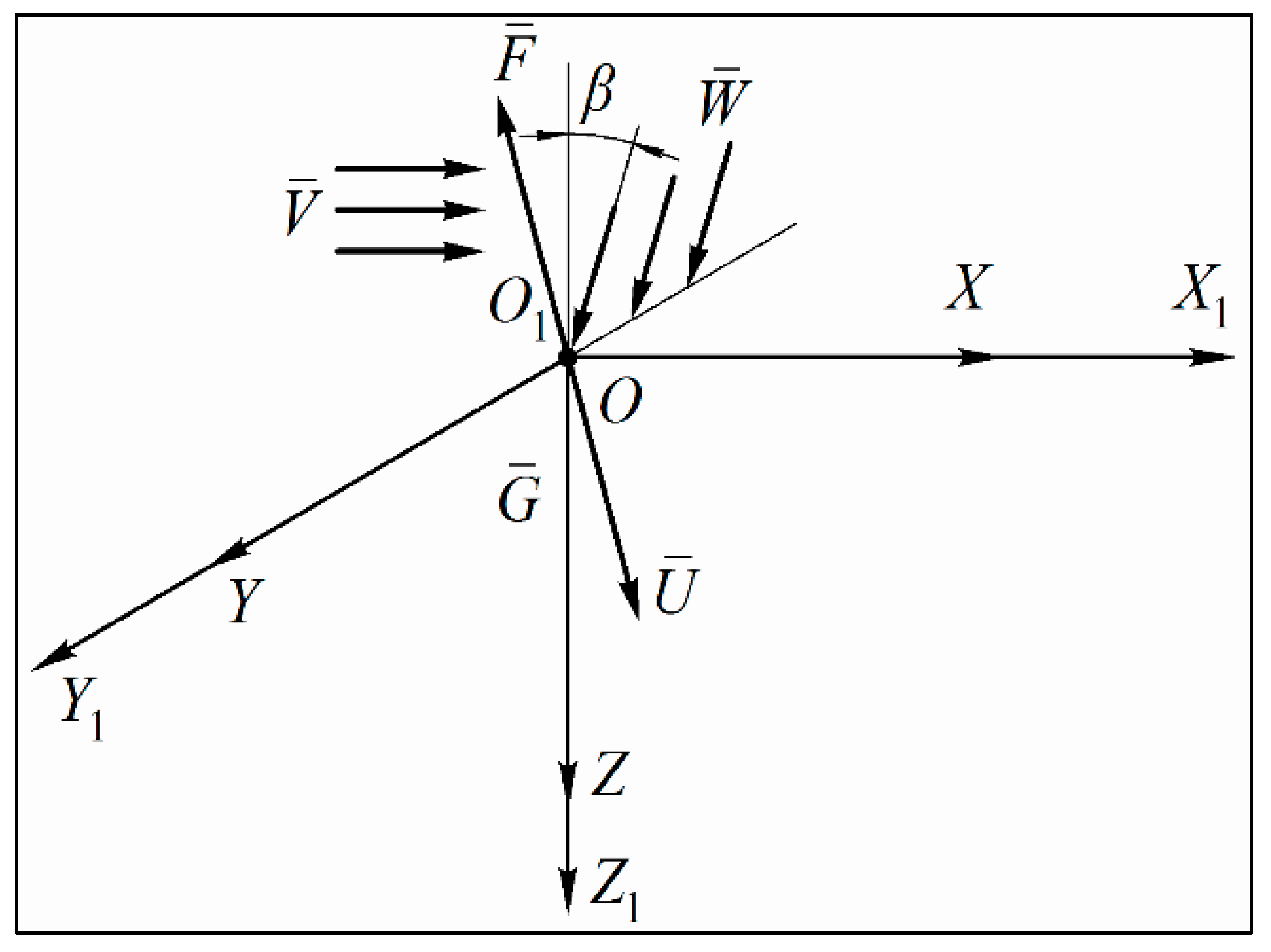

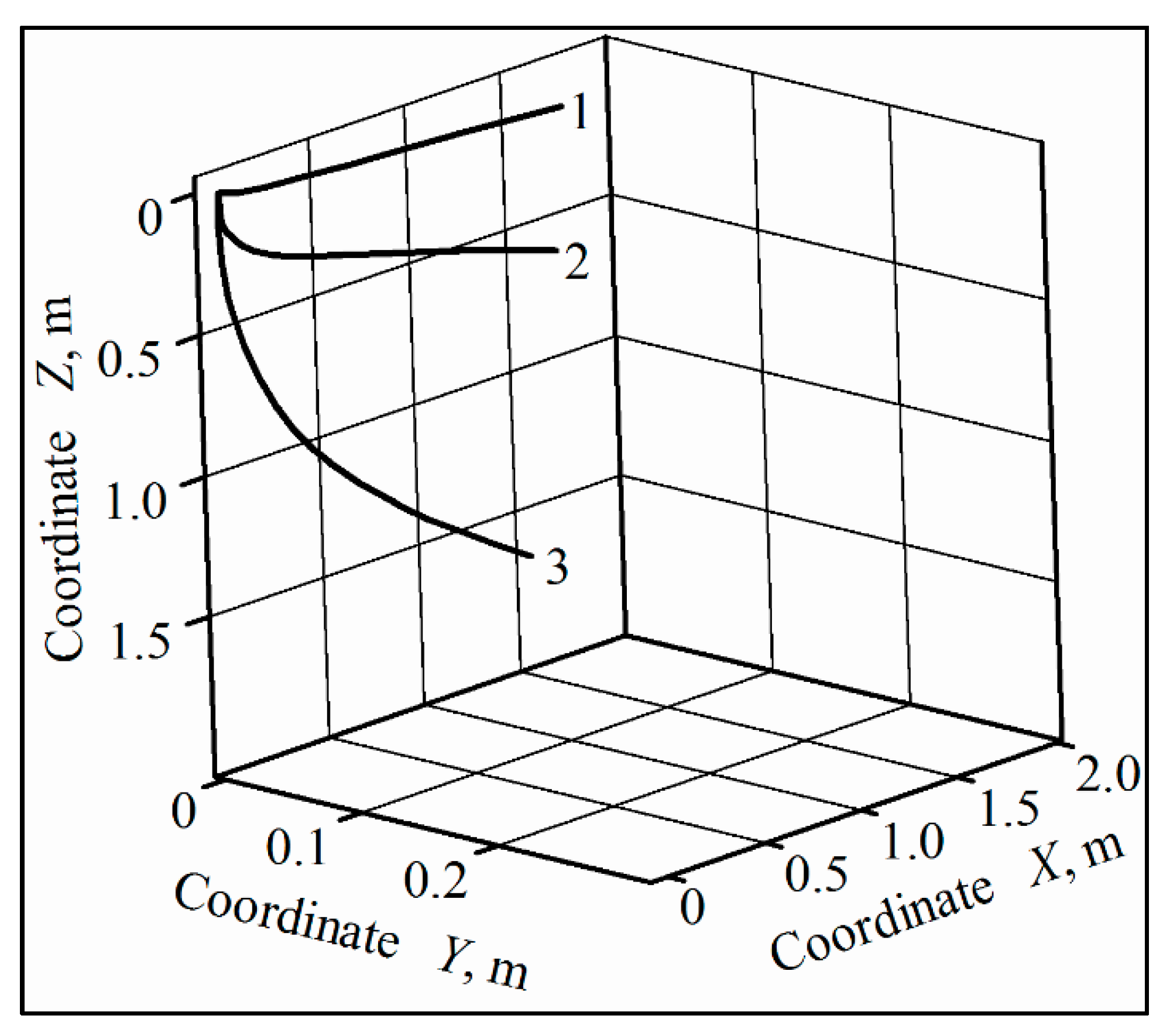
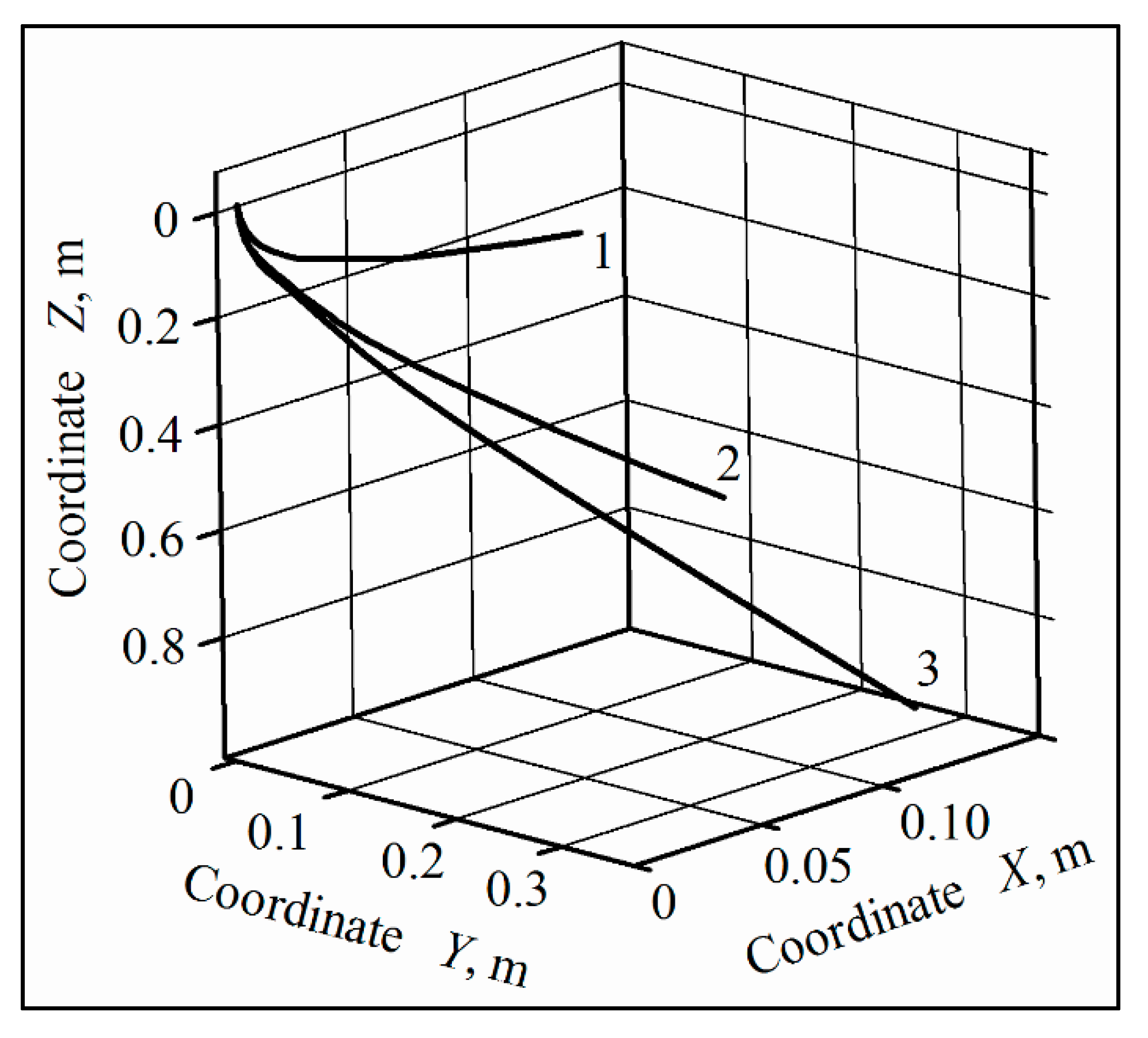
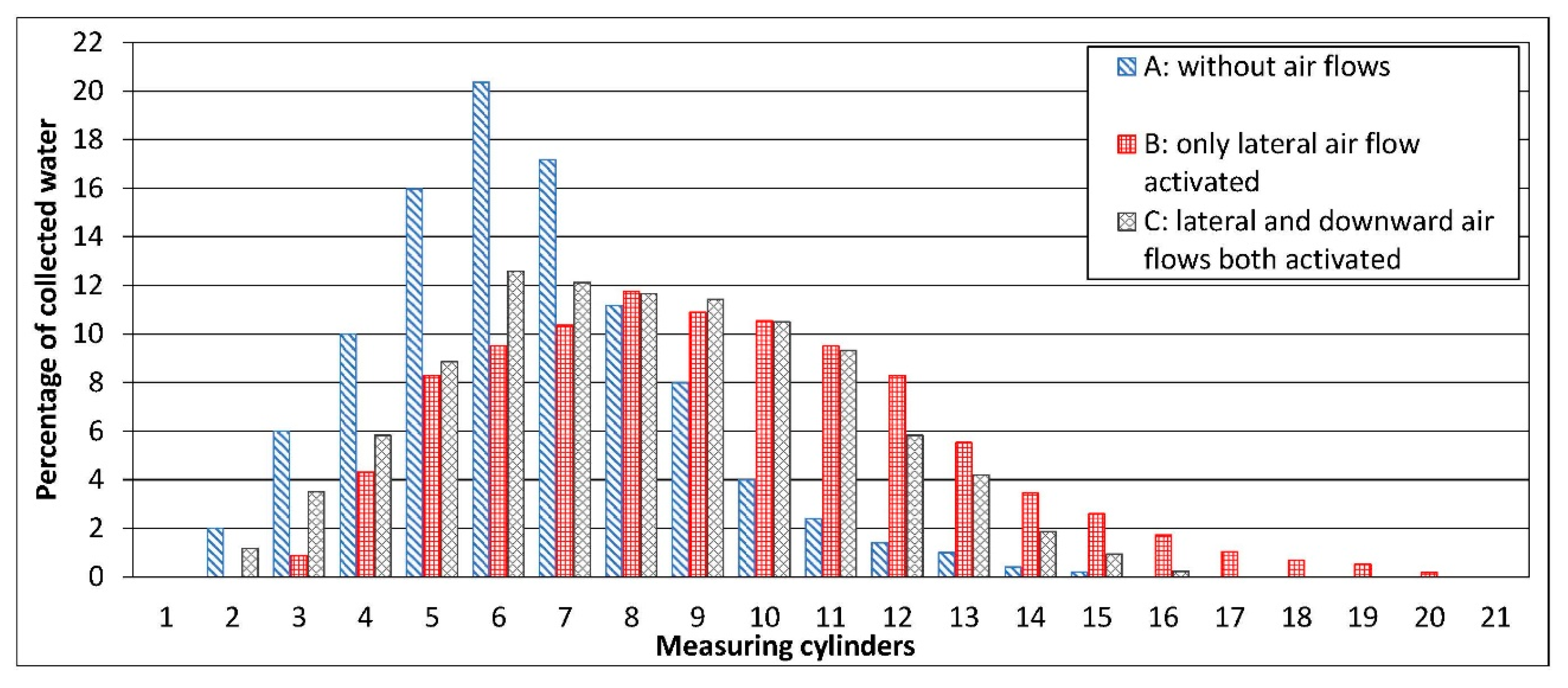
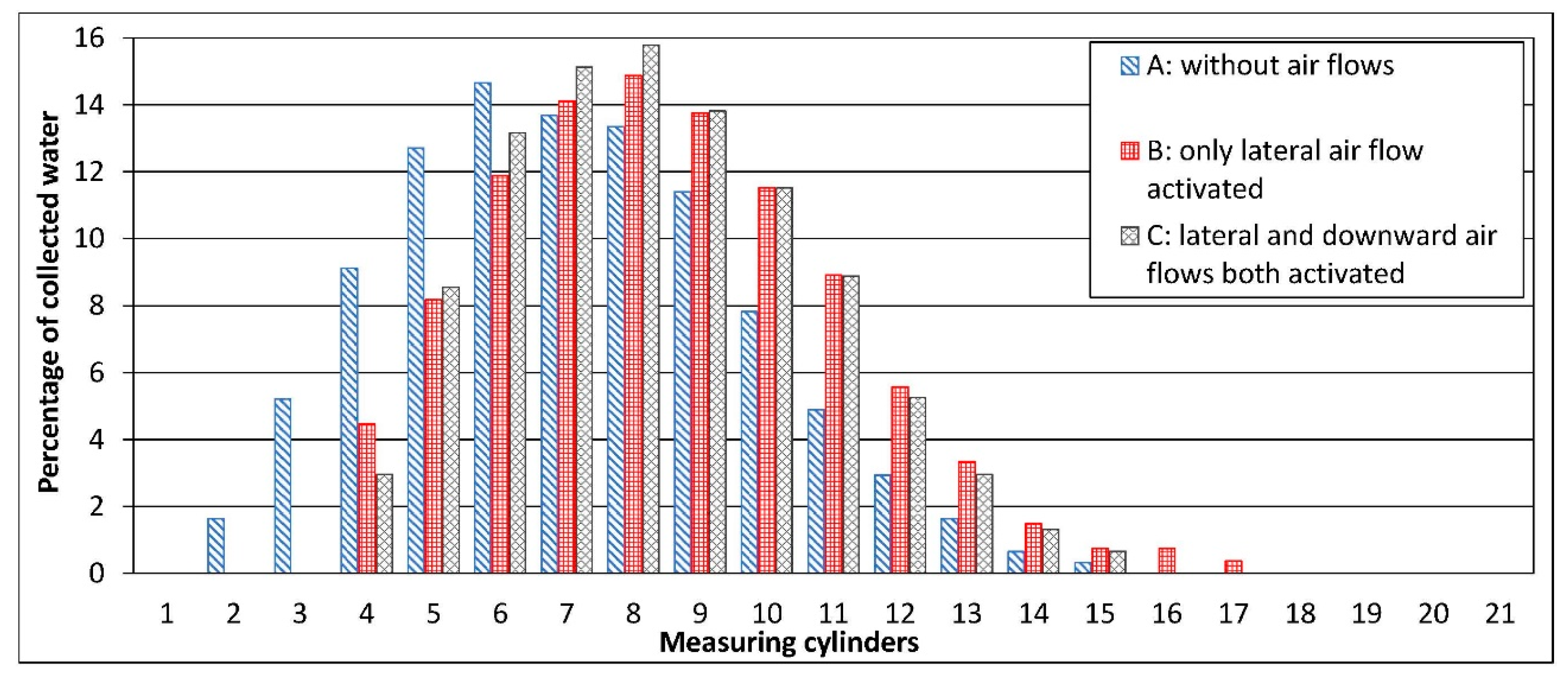
© 2020 by the authors. Licensee MDPI, Basel, Switzerland. This article is an open access article distributed under the terms and conditions of the Creative Commons Attribution (CC BY) license (http://creativecommons.org/licenses/by/4.0/).
Share and Cite
Pascuzzi, S.; Bulgakov, V.; Santoro, F.; Anifantis, A.S.; Ivanovs, S.; Holovach, I. A Study on the Drift of Spray Droplets Dipped in Airflows with Different Directions. Sustainability 2020, 12, 4644. https://doi.org/10.3390/su12114644
Pascuzzi S, Bulgakov V, Santoro F, Anifantis AS, Ivanovs S, Holovach I. A Study on the Drift of Spray Droplets Dipped in Airflows with Different Directions. Sustainability. 2020; 12(11):4644. https://doi.org/10.3390/su12114644
Chicago/Turabian StylePascuzzi, Simone, Volodymyr Bulgakov, Francesco Santoro, Alexandros Sotirios Anifantis, Semjons Ivanovs, and Ivan Holovach. 2020. "A Study on the Drift of Spray Droplets Dipped in Airflows with Different Directions" Sustainability 12, no. 11: 4644. https://doi.org/10.3390/su12114644






